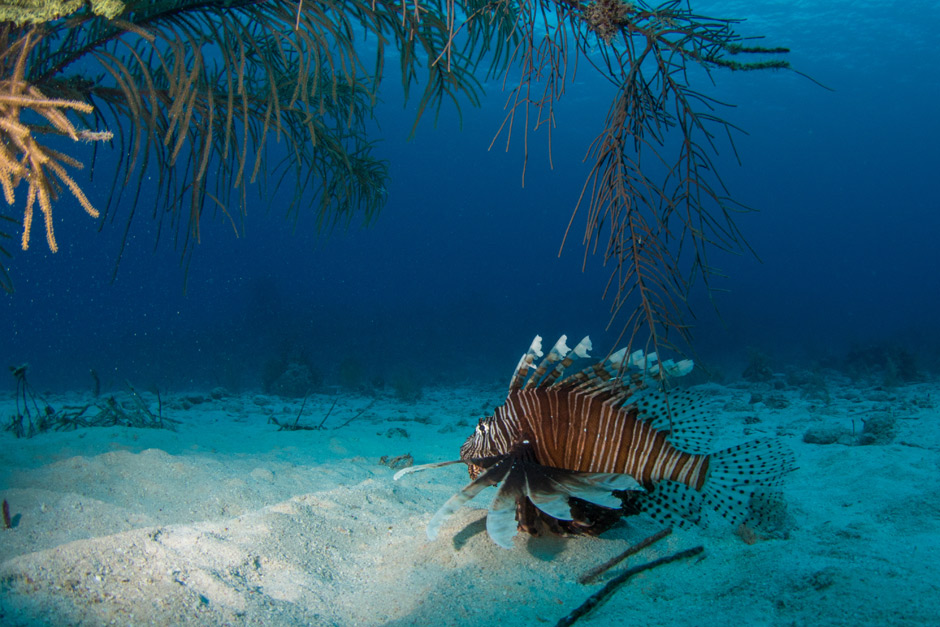 Why Lionfish of the Caribbean are Lovely but Lethal
Why Lionfish of the Caribbean are Lovely but Lethal
Over the past decade or so, non-native lionfish have become a growing problem in areas like the Caribbean Sea. While not everyone agrees on what prompted their aquatic invasion, much of the scientific community is convinced it began with the release of home aquarium lionfish in Florida into the western Atlantic.
Why Lionfish are Threatening the Caribbean
Invasive lionfish pose a very real ecological threat in the Wider Caribbean Region because they out-breed – and out-feed – native fish populations. Aggressive and insatiable predators, it’s been estimated that a single lionfish can decimate the prey in its home range by as much as 90% in a 5-week period!
Why do their numbers continue to grow?
- lionfish have no predators in non-native habitats,
- they lay hundreds of thousands of eggs every year,
- they’re strongly resistant to infection and disease,
- native prey fish don’t recognize them as predators,
- they eat frequently, consuming almost any marine creature that fits in their mouths, and
- they’ve been known to go without food for as long as three months
Rapidly increasing lionfish populations in the Caribbean are disrupting the delicate balance of local marine ecosystems, and local economies – especially where fishing and tourism are concerned.
Lionfish Culling
So, what is the answer to this prickly dilemma? The consensus among many marine parks in affected areas like Mexico, Bonaire, and the Florida Keys is that direct action like lionfish culling is the only way to control a species with such obvious resilience.
Organizations like The Cayman Islands’ Department of Environment (DoE) have authorized programs that educate divers on the threat posed by lionfish, while training them to safely – and legally – catch and remove these predators from local reefs, in an environmentally-friendly fashion. Lionfish are a lovely mild-flavored fish to enjoy on your plate as well. Participating in a lionfish cull is a great way for us divers to “do our part” to help keep our oceans plentiful with beautiful reef fish.
It’s been demonstrated that areas maintained by “lionfish hunters” see native marine species rebound over time, but collaboration at both the regional and national levels is crucial if these programs are to succeed long-term.
How to Treat a Lionfish Sting
While lionfish aren’t aggressive toward humans, accide nts involving their sharp, venom-filled spines do happen. The pain caused by a lionfish sting is intense, and almost immediate, so it’s important to end a dive as quickly and safely as possible in order to treat the injury.
nts involving their sharp, venom-filled spines do happen. The pain caused by a lionfish sting is intense, and almost immediate, so it’s important to end a dive as quickly and safely as possible in order to treat the injury.
Remove any pieces of spine from the wound, and immerse it for thirty seconds in water that’s as hot as you can stand it, without burning your skin. This will denature the venom and lessen the pain. Clean the puncture site thoroughly, and seek medical attention if you experience:
- allergic reactions,
- shortness of breath or trouble breathing,
- dizziness, nausea, or fainting,
- infection,
- or if the pain becomes unbearable
Do NOT treat swelling with cold packs or ice – as this will only increase the pain – but do consider taking Tylenol or aspirin if appropriate. The pain should slowly decrease over 24 hours.
Prevention is the very best medicine where lionfish stings are concerned. Divers are reminded to always remain alert to their surroundings and buoyancy, and to adopt a strict policy of “look, but don’t touch.”
For more information on where you can dive and participate a lionfish culling, send us an email at diving@flyandsea.com.







